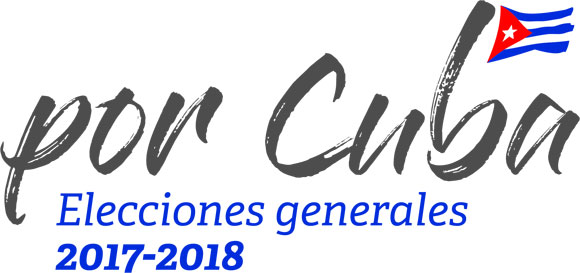 Members of Cuba’s electoral commissions at all levels continue to receive the necessary training, and are creating the conditions for the elections of deputies to the National Assembly of People’s Power and the delegates to provincial assemblies, scheduled for March 11, and in which more than eight million Cubans can participate. It is expected that the process will run smoothly, similar to what happened in the first stage of the process, in which delegates were elected to the island’s municipal assemblies.
Members of Cuba’s electoral commissions at all levels continue to receive the necessary training, and are creating the conditions for the elections of deputies to the National Assembly of People’s Power and the delegates to provincial assemblies, scheduled for March 11, and in which more than eight million Cubans can participate. It is expected that the process will run smoothly, similar to what happened in the first stage of the process, in which delegates were elected to the island’s municipal assemblies.
María Esther Bacallao Martínez, secretary of the National Electoral Commission (CEN), referred to the work carried out by authorities during this second stage of the general election process. The priority lies in the training, she stressed, taking into account that in the next election, a double vote will be held, that is, Cubans will vote both for their deputies to the National Assembly, and their provincial delegates, which means working with two ballots: green (deputies) and white (delegates).
“There will also be two ballot boxes at polling stations, and the electorate can vote for all, for several or for one of the candidates included on the ballots,” she explained.
Another element that distinguishes this stage, the electoral secretary noted, is the creation of electoral districts, which, according to the Law, are made up of municipalities where the number of inhabitants exceeds 100,000, in order to guarantee better representation of the people. Today, 92 districts are approved in the country.
Similarly, she explained, the number of polling stations has been updated, which amount to 24,470. Of these, 141 are “special,” in that they will be located in hospitals, terminals, and other spaces, to provide voters who cannot make it to normal polling stations with a location closer to where they are based in order to exercise their vote.
In accordance with the timetable of the second stage, the CEN secretary explained, work has been undertaken in the designation of the district authorities, other structures have been completed, and training has been carried out at all levels, including the municipal groups that receive and count electoral data.
Work also includes the publication of the photos and biographies of the 605 candidates for deputies and the 1,265 candidates for provincial delegates. Voter lists are already available and on show in public spaces, and voters can verify their registration details until February 22.
Similar to the previous stage, Bacallao explained that Cuban citizens over 16 years of age and permanent residents in the country for a period of no less than two years before the elections may vote. They must present their identity card or armed forces identity document in order to vote, and meet all the requirements outlined in the Electoral Law to exercise their constitutional right.
María Esther Bacallao announced that the dynamic test will be held March 4, an exercise that aims to activate and test the system in place to ensure the smooth running of the elections, and in which the media and electoral mechanisms and structures are put into practice to avoid any issues. (Taken from en.granma.cu)


